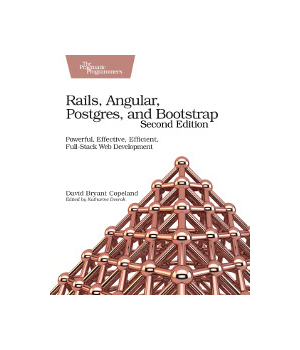

- #New rails postgres app how to
- #New rails postgres app install
- #New rails postgres app full
- #New rails postgres app password
Pkg-manager: yarn test: # our next job, called "test" # we run "parallel job containers" to enable speeding up our tests # this splits our tests across multiple containers.
#New rails postgres app install
ruby/install-deps # use the ruby orb to install dependencies # use the node orb to install our packages # specifying that we use `yarn` and to cache dependencies with `yarn.lock` # learn more: image: cimg/ruby:2.7.1-node # use a tailored CircleCI docker image. orbs:īuild: # our first job, named "build" docker: # Declare the orbs that we'll use in our config. Version: 2.1 # Use 2.1 to enable using orbs and other features. circleci/config.yml and ensure these environment variables are set correctly Step 3 - CircleCI - Use the staging environment Here are some resources to help understand Rails credentials

It also allows for a high degree of customization for CircleCI without affecting Docker test, development, and production deployments.Ĭompleting the entire guide is required to ensure all functionality works as expected, but the primary factor that makes this build work is overwriting the default host: db in config/database.yml Why I prefer this approach is because it allows the use of standard CircleCI environments for the build and test jobs that utilize native CircleCI images for Ruby and PostgreSQL. The environment name can be whatever you'd like, ci, cd, or circleci would all work as environment names as well. The approach in this guide creates a new Rails environment: staging, and the only responsibility of the staging environment is to be used with CircleCI for CI/CD testing. The guide assumes the above Docker + Rails setup is complete. The following link is a setup guide for a Rails + PostgreSQL application using Docker:
#New rails postgres app how to
The next two chapters explain how to model your database tables and how to manage those using Rails Migrations.This guide is intended for a Rails application that uses PostgreSQL and is tested, developed, and deployed using Docker. When you finish, it should look as follows −
#New rails postgres app password
In each of the sections, you need to change the username and password lines to reflect the permissions on the databases you've created. This file has live configuration sections for PostgreSQL databases. You do this in the file database.yml, available in the library\config subdirectory of Rails Application you created. Configuring database.ymlĪt this point, you need to let Rails know the username and password for the databases. Postgres=# CREATE DATABASE library_test OWNER rubyuser Use the following command for creating a database library_test. Postgres=# CREATE DATABASE library_production OWNER rubyuser Use the following command for creating a database library_production. Postgres=# CREATE DATABASE library_development OWNER rubyuser Use the following command for creating a database library_development. If you want to create a password for the new user, then use the following command. Tp> sudo -u postgres createuser rubyuser -s Use the following command to create a user with the name rubyuser. When you finish, it should look something like −īy default, PostgreSQL does not provide any users. In each of the sections you use, you need to change the username and password lines to reflect the permissions on the databases you've created. This file has live configuration sections for MySQL databases.

Configuring database.ymlĪt this point, you need to let Rails know about the user name and password for the databases. You can do the same thing for two more databases library_production and library_test. Mysql> grant all privileges on library_development.* Mysql> create database library_development The MySQL console session in which you do this looks something like − In MySQL, we are using the root user ID for our application. We are using the root user ID for our application.
#New rails postgres app full
You should initialize all three of them and create a user and password for them with full read and write privileges. According to convention, their names should be − Ruby on Rails recommends to create three databases - a database each for development, testing, and production environment.

Before starting with this chapter, make sure your database server is up and running.


 0 kommentar(er)
0 kommentar(er)
